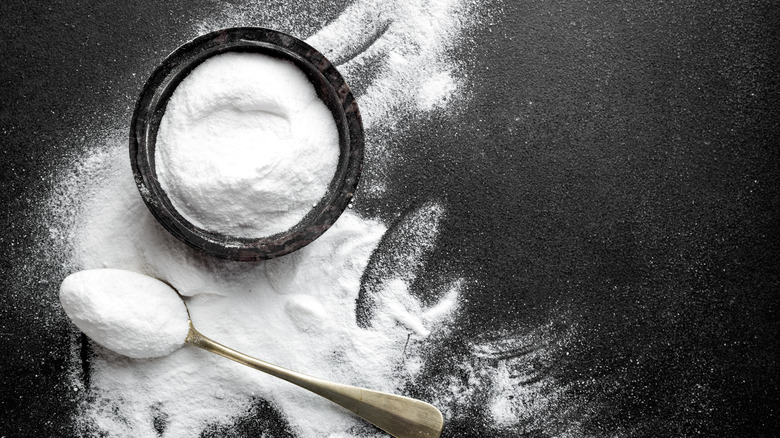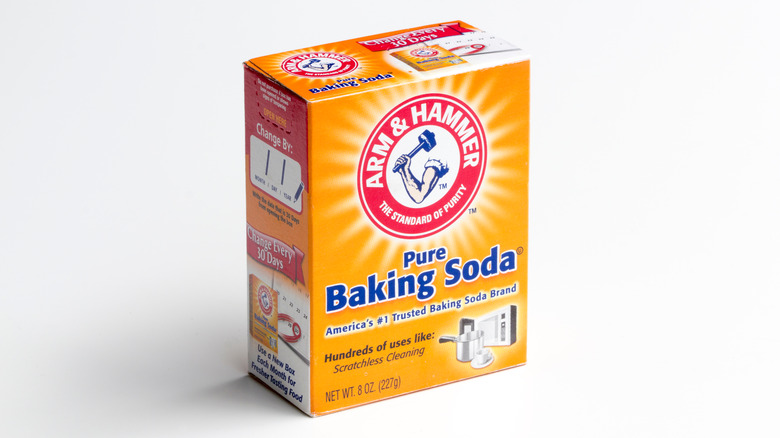How Baking Soda Made Its Way Into Our Hearts And Pantries
For something we use in our homes weekly, if not daily, we don't give a whole lot of thought to baking soda. Sure, most baking recipes call for it, you'll toss a spoonful in with the laundry every now and again, and you never want to run out of the stuff, but what's so special about it? To the eye, it appears like a white powder packed into an unremarkable orange box. Most people probably couldn't tell you where baking soda came from or what it actually is, even though it sits in almost every pantry alongside its cohort of other baking ingredients like baking powder and flour.
Believe it or not, Ciner claims that we get our little box of baking soda from mining! Dug up from all over the United States, that white powder is made from finely ground nahcolite and trona minerals.
On a more chemical level, Made How describes baking soda as an acid salt that is appreciated for its reactions with other chemicals. Think of baking soda reacting with vinegar or lemon!
Baking soda paired with other chemicals is known to clean and to remove foul odors, and is probably most well known for its ability to leaven bread and baked desserts. It is used at home, in your food, and to manufacture chemicals, leather, rubber, textiles, and much, much more, but how did this little old powder become so important to our everyday life?
Arm & Hammer
According to Epicurious, a variation of baking soda existed in ancient Egypt, but it wasn't used for baking (think more along the lines of mummifying). Thousands of years after that, French chemist Nicolas Leblanc developed a process for the creation of soda ash in 1791, but due to economic difficulties, his innovation crashed and burned. It wasn't until 1846 that Dr. Austin Church and Dr. John Dwight created the baking soda we know and love today and changed the way we bake forever.
The reality of baking before the invention of packaged yeast and baking soda was much less reliable. Who knew if the wild yeast or starter you cultivated would accidentally die due to temperature change or not having enough food?
Luckily, AH Performance says we have Dr. Austin Church and Dr. John Dwight to thank for dashing our worries. The two men were brothers-in-law and initially called their baking soda business "Church & Dwight" — a brand you probably don't recognize by name today. That's because in 1867, Dr. Church's son James joined the company and changed the name and the brand symbol into something that would soon become a household name: Arm & Hammer.
Today, other baking soda brands like Bob's Red Mill have popped up, but like Arm & Hammer, the company sources its deposits from within United States borders, making it American-made! But regardless of how it got there, we're forever appreciative of how baking soda will always be there for our every need.

